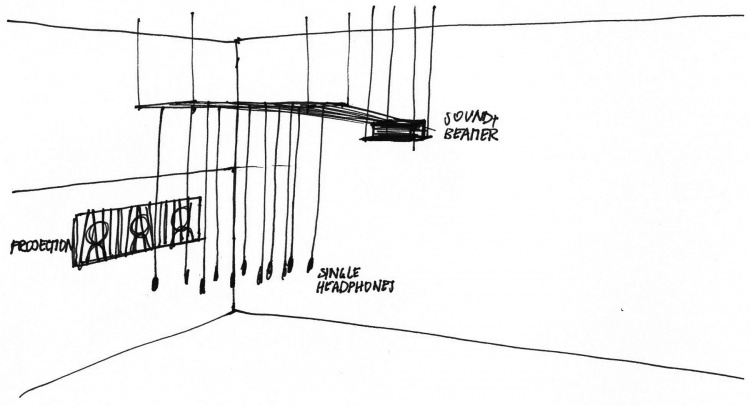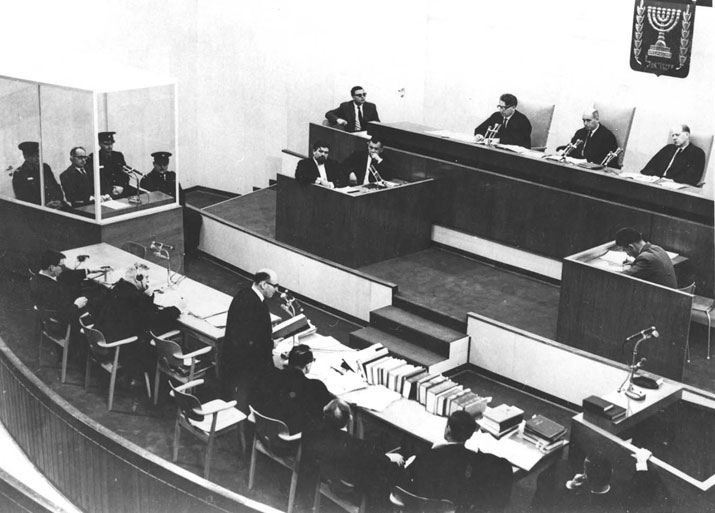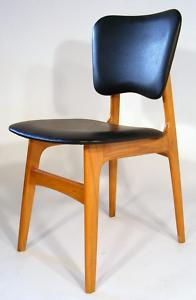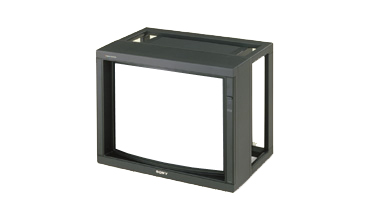User:Natasa Siencnik/project3
Morality Play
Concept
50 years after the Eichmann trial in Israel took place, the full compendium of more than 400 hours of film footage documenting the trial were released earlier this year on Youtube. In 1961, former SS officer and highest figure in the Nazi hierarchy responsible for facilitating the extermination of European Jewry, was charged and tried with committing crimes against the Jewish people and humanity. The case of multiple controversies was the first telecast of actual courtroom proceedings and was from the beginning conceptualized as a symbolic performance with a special stage design which placed the accused in a bullet-proof glass booth, a film director that made deliberate cinematographic decisions and an international audience that witnessed the trial from the living room. Originally shown as daily newsreels on international television, the trial was performed as a morality play, not surprisingly ending with the death sentence of the accused, which until today remains the only civil execution ever carried out in Israel.
In the installation "The Man in the Glass Box (1961–2011)", the aesthetic and narrative strategies of the trial are made transparent. The proceedings are performed as an audio and video drama in three acts: the appeal, the testimony, and the verdict. From the ceiling 6 headphones are hanging, all sliced in half, of which each presents a disembodied voice of one persona in the proceedings: the accused, the judge, the prosecutor, the defender, a witness, and a political journalist. All voices contribute to the trial from their own perspective, however, only disclose a fraction of the story.
The audio is expanded by a three channel video projection, which likewise disassembles the original film footage. As a result of the required simultaneous translations of the original proceedings from Hebrew (and partly German) into English, French and German, a large part of the footage is showing the silent protagonists of the trial, while a translator – mostly a female voice – is talking for all of them as a voice-over. The artist reenacts the trial by recreating the silent film scenes of the footage all by herself and is lending her voice to the translator who presents all characters of the play. Thus she is renarrating the story for the visitors, who can combine the stories, change perspectives and play an active role in the perception of the trial and politics of remembrance. </ br>
Protagonists
The Accused (Eichmann)
The Judge
The Prosecutor
The Defender
A Witness
A Political Journalist
SYMBOLIC TRINITY
Someone – Noone – Everyone
Guilt – Responsibility – Dignity
Hell – Paradise – Purgatory
God Father – God Son – Holy Spirit
Key Words
Leidenschaftlosigkeit mit der Leiden versprachlicht wird
Paradoxon des Zeugens
Rhytmisierung der Sprache
Einmal ist Keinmal
Einmal is Kainmal / Old testament
Authenticity
Repetition / Loop
Seriell / Monoton
Memory
Experience
Forgetting
Collective heardbeat
400 hours of material
Erinnerung abspielen
Stille Post
Verfremdungseffekt
My own working through the text
My own reading of the material
Unüberschaubarkeit der Masse
Bilderverbot / kein Bild vom Grauen
Possible Project Ideas
Repeatingly reading the testimony of Aveva Fleischmann and running until I can't go on
Same story repeats / doubles / tripples until it gets diffuse and incomprehensible
One voice for all protagonists of the trial (protocolls) > translations > who's speaking? > a story of millions
Telephone (children's play) / Stille Post > memories get difuse, change of certain details
Video gets interrupted by real-estate commercials (like original in 1961)
Bilderverbot > empty (white) tv screens as space for imagination
Nested loops (story within a story) Natasa / Nroma Rose / Hanna Arendt / Aveva Fleischmann
Wolly Thoughts
Paradox des Zeugens vom Unsagbaren / gegen Topos des Unsagbaren / Zeugnis ist immer unvollständig / Zeugnis über das Unmögliche / Enthumanisierung, wo das Menschliche restlos getilgt ist / Überzeugung der Unzuständigkeit des Rechts in diesem Gebiet / Unzulänglichkeit der bloßen Festellung der Fakten / kein rechtliches Verfahren kann das durch Auschwitz hinterlassene Porblem erschöpfen / Auschwitz reißt unsere ethischen und juristischen Kategorien mit sich in den Abgrund / konfrontiert uns der organisierte Massenmord mit einer "Wirklichkeit, die notwendig ihre faktischen Elemente übersteigt: das ist die Aporie von Auschwitz" / trotz genauester Faktenkenntnis und Rekonstruktion dieses Geschehen "eigentlich opak" / Grenzen der Justiz, Grenzen der Darstellung / Gerichtsverfahren, das an die Stelle einer Rekonsturktion der Wirklichkeit des Lagers tritt / ein andauernder, nicht-enden wollender Vorgang / "Ich möchte vergessen / aber ich sehe es immer wieder vor mir" / systematische Entwürdigung erinnern / Namenlosigkeit der unzähligen Opfer / fortwährende Möglichkeit und Aktualität des Genozids / "ich kam aus dem Lager heraus / aber das Lager besteht weiter" / "Wir / die noch mit diesen Bildern leben / wissen / daß Millionen wieder so warten können / angesichts ihrer Zerstörung / und daß diee Zerstörung an Effektivität die alten Einrichtungen un das Vielfache übertrifft" / unüberbrückbare Diskrepanz zwischen Wissen über den Ort und den konkreten Orten und Räumen / Gefühl der Leere / Verlust des Vorstellungsvermögens / sorgfältige Registrierung der Räumlichkeiti n ihrer Leere und Verlassenheit / Schwund der Sichtbarkeit, auf der Vergeblichkeit seiner Suche und seienr Erkenntnisversuche / "Dies ist die Tür, durch die sie gingen, in die Räume, die in grelles Licht getaucht waren und in denen es keine Duschen gab, sondern nur diese viereckigen Säulen aus Bleck" / Unfähigkeit das Geschehene vorzustellen / bewussten Verzicht auf "Bebilderung", auf Darstellung des Undarstellbaren, entgegen der darstellerischen Enthaltsamkeit, die iener Art Bilderverbot gleichkommt / Vor-Augen-Stellens / Zuhörer in Zuschauer zu verwandeln / penible Nachfragen des Richters und der Staatsanwaltschaft drangen die Zeugen immer wieder zu weiterer Präzisierung, zu Konkretisierung: der Örtlichkeiten und ihrer Angaben, der Folter- und Tötungsmethoden, der Idiosynkrasien und Launen ihrer Folterer / Sichtbarkeit zu bringen durch eine quasi topographisce Vermessung der "Ortschaft" / "fassen kann er nur, wasi hm selbst wiederfährt" / Phantomschmerz / ungreifbar und unstillbar / gleichermaßen ort- und ruhelos / Stimmengewirr / Serie ohne Anfang und Ende zu bilden / weniger Fragen der Darstellbarkeit und der Zeugenschaft aufwirft, als ivelmehr einen Versucht darstellt, ein Theater der Scham und des Schmerzes zu kreieren / "Dein Schmerz ist eitel, du bist der Erschütterung, die Dich überkommt, nicht wert", sagt der Erzähler von Abshiced von den Eltern angesichts der esten Bilder aus den Konzentrationslagern
Text Examples
AVEVA FLEISCHMANN | TESTIMONY
The next witness. I worked in a hairdressing salon. There was a tiem when we were allowed to be outside from 11 am to 5 pm. Then I went to work wearing the yellow badge. He was one of our customers – he and his wife. We knew that he was working for the Gestapo. I was attending to his hands. I was boliged to wear a jeacket over my working-gown; they were not supposed to know that a Jew was employed in that place. Then he told his story. He spoke generally about plans regarding the Jews, that htey were taking them away for forced labour, and he said that there was now a man here who knew and understood how to handle this, how the Jews should be deat with. And then he mentioned the name of Adolf Eichmann. Than was the first time I heard it. But afterwards we heard it often enough. They lockes us up, then, inside the Jewsih houses, ocmpletely; it was impossible to go out. Then they started on the house where we were. On 10 November, at six in the morning, men of the Arrow Cross came and ordered everyone inside the house between the ages of 18 and 40 to come down to the courtyard. My father was blind. He had been blind already for twenty years. My mother served as his eyes. She was his nurse and his guide and also took care of us. They left her behind, and I was taken. Together with us, there were grandmothers, granddaughters. Then, at that time, they took a gorup of about fifty to sixty women. They also took the young men who were in the house at thetime, those who had managed to come home on a day's leave fro mthe labour campTo the brick factory at Obuda. It was a suburb of Budapest – on the Buda side, the hilly side. On the way, we came across several groups who had been taken form the other houses. And along the way there were very many corpses, with, as we could see, yellow badges, which proved that they were Jewish. Blood, which by now had congealed, had flowed from their heads or chests. I cannot give a number. Thousand upon thousands. We sat there all day and all night, for it was impossible to stretch one's legs. We sat huddled closely together. They took my mother as well five days later. They took my cousin, who was in her eighth month of pregnancy. We were to take food from home. We were told to take food for three days. But we did not eat, for we were unable to do so. We sat there huddled together without moving. These soldiers who wore the Arrow Cross moved around, all the time shooting and throwing hand grenades. They said that in this way they were killing those tying to flee, or warning them. Early the next morning, we had to line up in rows, and we walked past a committe which included several SS officers and several men in civilian clothes. They lined us up in rows, and we began walking. They said we were going to work. We walked from early in the morning until the darf of night. There were many people who already on the first day fell by the wayside – they were unable to walk. They remained on the road; either they shot them, or they beat them until they died, or they simply left them dying until they were finished. In the evning, we were given some dirty water. They said it was soup. About 1.500–2000 people. We walked in fours. The march lasted about eight days, excluding the fifth day, when we came to a camping place, as it were. It was a large famstead for rasing pigs, and there they cleared one pigsty for us. There they put us into these stalls which were designed for pigs. We were herded together there all night; byen large numbers of people had alreay contracted dysentery, and their feet were injured.
Video Examples
Installation

This project was brought to you by the GLICKMAN REAL ESTATE CORPORATION.






